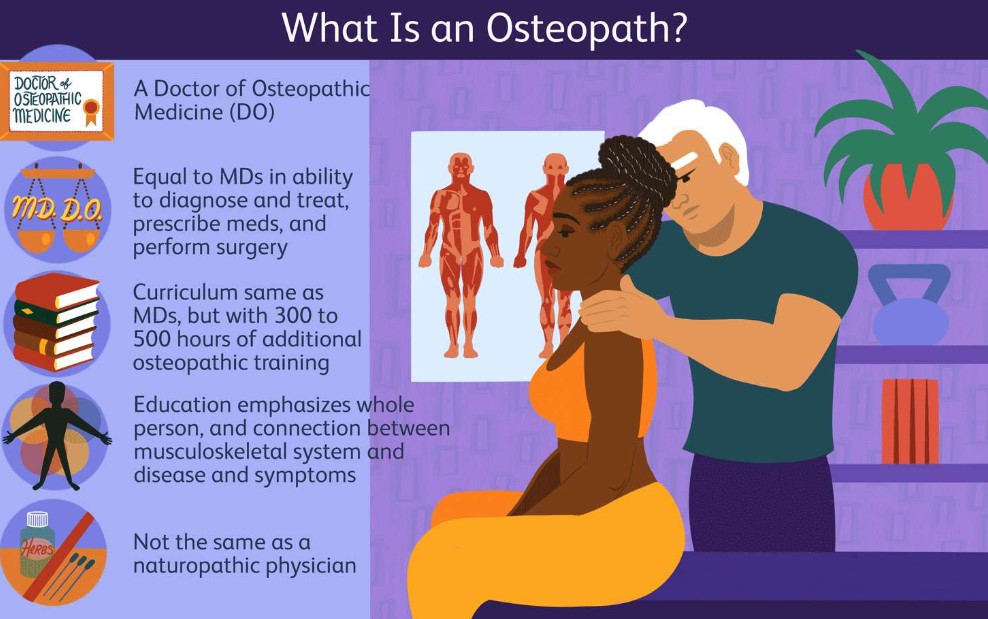BOURSESSENEGAL – Osteopath offers a holistic approach to health that emphasizes the interrelationship between the body’s structure and function. As an osteopath, I focus on diagnosing and treating various conditions, using manual therapy techniques to promote overall wellness. This guide will delve into what osteopathy entails, the benefits it provides, common treatments, and how you can integrate osteopathic care into your health routine.
What is Osteopathy?
Osteopathy is a form of alternative medicine that emphasizes the body’s ability to heal itself. An osteopath uses hands-on techniques to diagnose, treat, and prevent a wide range of conditions. By understanding how different systems in the body work together, osteopaths can address issues not just in the musculoskeletal system but throughout the entire body.
The Philosophy Behind Osteopathy
The philosophy of osteopathy centers on a few key principles:
- The Body is a Unit: Osteopathy views the body as a whole. Every part is interconnected, and a problem in one area can affect another.
- Self-Healing Mechanism: The body has a natural ability to heal itself. Osteopathic treatment supports this process by improving circulation and relieving tension.
- Importance of Structure and Function: The relationship between the body’s structure (anatomy) and its function (physiology) is vital for maintaining health.
Benefits of Seeing an Osteopath
1. Pain Relief
Many individuals seek osteopathic care for pain relief. Whether it’s back pain, neck pain, or joint pain, osteopaths use various techniques to alleviate discomfort. By addressing the root cause of pain rather than just the symptoms, patients often experience long-lasting relief.
2. Improved Mobility
Osteopathy can enhance mobility and flexibility. Through manual manipulation, osteopaths can release tension in muscles and joints, allowing for greater range of motion. This is particularly beneficial for athletes or those recovering from injuries.
3. Stress Reduction
Stress can manifest physically, leading to tension and discomfort. Osteopathic treatments often promote relaxation and reduce stress levels. Techniques such as cranial osteopathy focus on calming the nervous system, allowing for improved mental well-being.
4. Holistic Health
Osteopathy takes a holistic view of health, considering not just physical symptoms but also lifestyle, emotional health, and overall wellness. This comprehensive approach can lead to better health outcomes and improved quality of life.
Common Conditions Treated by Osteopaths
1. Musculoskeletal Issues
Osteopaths frequently treat musculoskeletal issues such as:
- Back Pain: Often caused by poor posture, strain, or injury, osteopaths can use manipulation to alleviate pain and restore function.
- Neck Pain: Similar to back pain, neck pain may result from various factors, including stress and tension. Osteopathy can help relieve discomfort and improve mobility.
- Joint Pain: Conditions like arthritis can benefit from osteopathic care, which aims to reduce inflammation and improve joint function.
2. Sports Injuries
Athletes often turn to osteopaths for sports injuries. Osteopathic treatment can facilitate recovery by addressing underlying issues and promoting proper biomechanics, which can prevent future injuries.
3. Digestive Problems
Osteopathy can also help with digestive issues. Techniques that focus on the abdomen may relieve symptoms of bloating, constipation, and irritable bowel syndrome (IBS).
4. Headaches and Migraines
Many people experience tension headaches or migraines due to muscle tension or stress. Osteopaths can use manual therapy to release tension in the neck and shoulders, often providing relief.
Osteopathic Techniques and Treatments
1. Cranial Osteopathy
Cranial osteopathy involves gentle manipulation of the skull and spine. This technique focuses on the craniosacral system, which can help alleviate stress, improve sleep, and enhance overall well-being.
2. Myofascial Release
This technique involves applying gentle sustained pressure into the myofascial connective tissue restrictions. It helps restore mobility, reduce pain, and improve function.
3. Manipulation and Mobilization
Osteopaths use various manual techniques to manipulate and mobilize joints and soft tissues. This can relieve tension, improve circulation, and promote healing.
4. Exercise and Lifestyle Advice
In addition to hands-on treatment, osteopaths often provide advice on exercises and lifestyle changes. This may include stretches, strengthening exercises, or recommendations for improving posture.
How to Choose an Osteopath
1. Qualifications and Experience
When selecting an osteopath, ensure they are registered with a professional body, such as the General Osteopathic Council (GOsC) in the UK. Check their qualifications and experience in treating your specific condition.
2. Approach to Treatment
Different osteopaths may have varying treatment styles. Some may focus more on structural techniques, while others emphasize holistic approaches. Consider scheduling a consultation to discuss their methods and determine if they align with your needs.
3. Recommendations and Reviews
Seek recommendations from friends, family, or healthcare providers. Online reviews can also provide insight into the experiences of other patients.
Integrating Osteopathy into Your Health Routine
1. Regular Check-Ups
Consider scheduling regular visits with your osteopath, especially if you have chronic issues. Preventative care can help maintain your health and address problems before they escalate.
2. Combine with Other Treatments
Osteopathy can complement other forms of treatment, such as physiotherapy, chiropractic care, or massage therapy. Collaborating with various healthcare providers can lead to comprehensive care.
3. Focus on Self-Care
Incorporate self-care practices into your routine, such as regular exercise, good nutrition, and stress management techniques. Your osteopath can provide guidance on effective self-care strategies.
Conclusion: Embrace Osteopath for Holistic Health
Osteopathy offers a unique and holistic approach to health care. By addressing the interconnectedness of body systems, osteopaths can provide effective treatment for various conditions while promoting overall well-being. Whether you seek pain relief, improved mobility, or stress reduction, osteopathic care can enhance your quality of life.
If you’re considering seeing an osteopath, take the time to research and find a qualified professional who aligns with your health goals. Embrace the healing power of osteopathy, and take a proactive step towards better health today!
REFERENCE : https://www.health.com/



